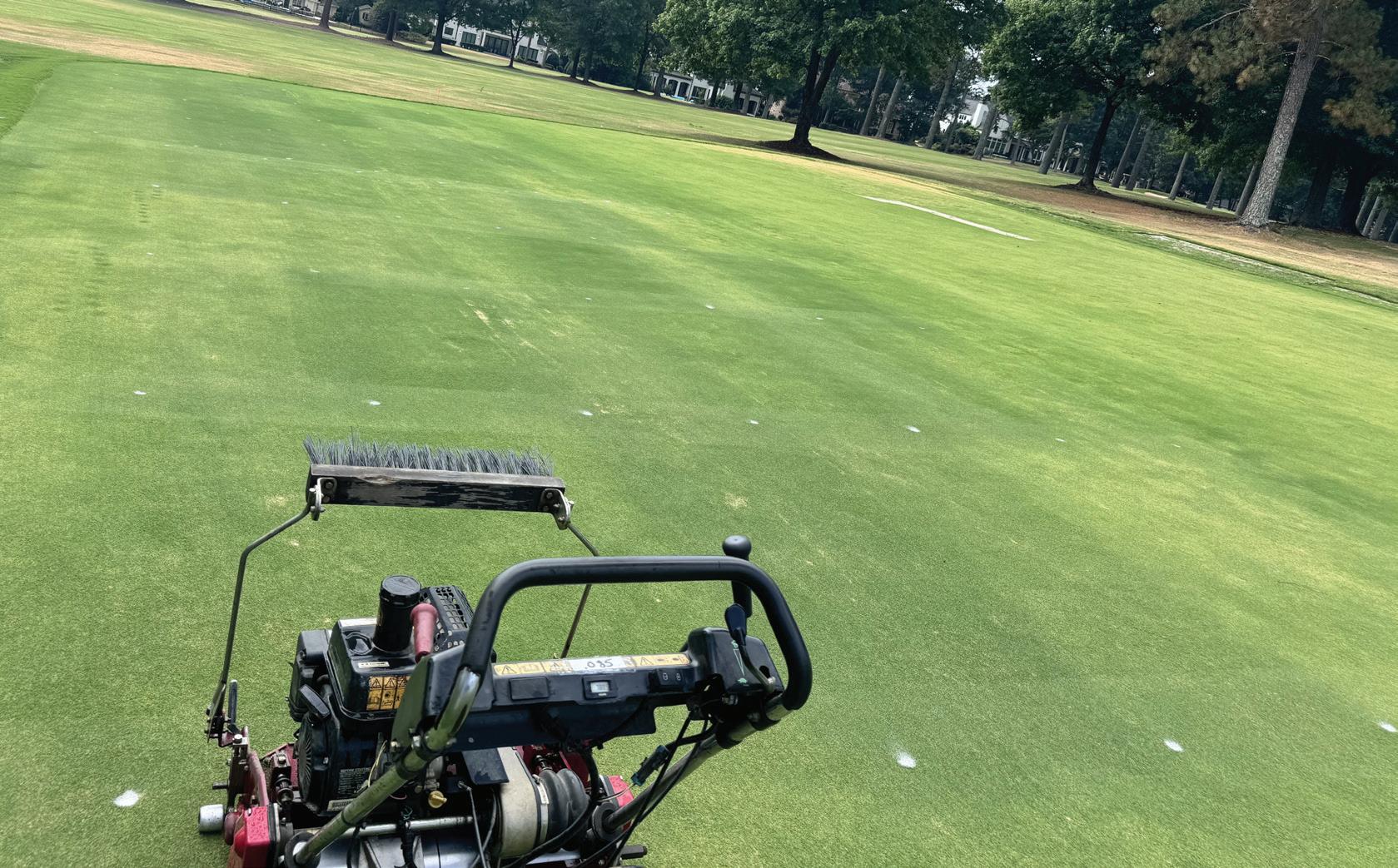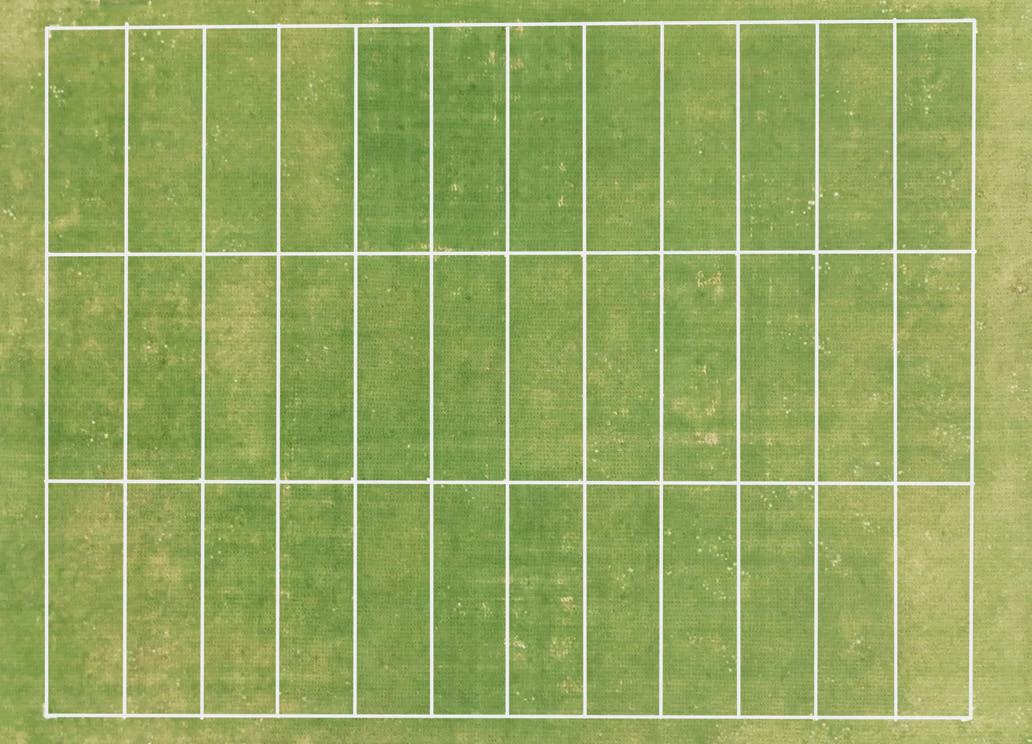
4 minute read
Student Research Corner
Using Growth Rate for Precision Fertilization Management on Bermudagrass Putting Greens
By Nirmal Timilsina
Nitrogen (N) is critical for successful putting green management in golf courses. N at an optimum amount is important, and more is not necessarily better. Optimum N application balances putting green growth, visual quality, and playability. Currently, golf course superintendents have adjusted N application decisions mainly by “observing turf” which relies on visual turfgrass quality, seasonal scheduling, or experience. However, this application strategy is subjective and heavily relies on individual judgment, which can lead to a less accurate N application. Although yield is not an important indicator of turfgrass management success, golf course putting greens aesthetics and functions are closely related to turfgrass growth rate. In addition, few superintendents have started measuring fresh clipping volume in recent years to quantify growth for improving resource use efficiency while maintaining turfgrass quality. Thus, one of my dissertation projects aims to assess the relationship between turfgrass clipping yield and management practices on golf course greens, and use that knowledge to develop management practice guidelines for precision fertilization management on golf course putting greens.

This multi-year research is conducted on two bermudagrass putting green locations constructed based on United States Golf Association (USGA) recommendations: ‘Champion’ bermudagrass putting green at North Carolina State University’s Lake Wheeler turfgrass research facility, Raleigh, NC and ‘G12’ bermudagrass putting green at North Ridge County Club, Raleigh, NC. The study on the “Champion” green evaluates four N rates [0 (No N), 5 (Low N), 10 (Medium N), and 20 (high N) kg N ha-1 applied every 14 days as urea]. The study on the “G12” green is maintained at two mowing heights, which are 0.085" and 0.125". At each mowing height, the study explores four N rates [0 (No N), 5 (Low N), 10 (Medium N), and 20 (high N) kg N ha-1 applied every 14 days as urea] and two PGR rates [0 and 0.034 kg/ ha applied as trinexapac-ethyl (TE, Primo® Maxx, Syngenta) at every ~170 growing degree days (GDD) with 10°C as the base temperature]. Foot traffic (approximately 1000 rounds/week) is applied to all plots by walking with golf shoes to simulate putting green use. All other management practices generally applied to a bermudagrass putting greens in the transition zone are followed. The plots are mowed three times a week using a Toro Greenmaster 1000, and clippings collected are dried at 60°C to achieve a constant mass and cleaned to remove sand and debris. Normalized Difference Red Edge (NDRE), volumetric soil moisture, surface firmness, and visual turfgrass quality are also recorded to assess the putting green performance.

The preliminary findings from two locations indicate that N plays an important role in putting green growth, with higher N rates contributing to increased clipping yields. This trend aligns with increased N rates correlating with higher turfgrass visual quality and NDRE values, with medium and high N application rates producing acceptable turfgrass quality. Early findings suggest that TE applications suppress clipping yield; however, the suppression rate depends on N application rates, mowing height, and growing season. Increasing mowing heights decreases clipping yield and putting green surface firmness.
In summary, applying medium and high N application rates will drive turfgrass growth and maintain acceptable putting green quality, and using plant growth regulators can produce acceptable quality while reducing maintenance works by suppressing the growth rate. Besides aboveground clipping yield, my project will also investigate how management practices affect bermudagrass belowground growth, which contributes to thatch layer and organic matter development. As the project continues, we expect to use technology, such as machine learning, to help us better understand bermudagrass aboveground and belowground growth better and develop practical guidelines for greenkeepers regarding golf course putting greens management for maintaining green surface quality and playability as well as reasonable belowground growth accumulation.
Nirmal currently is a second-year PhD student under the supervision of Dr. Qiyu Zhou






